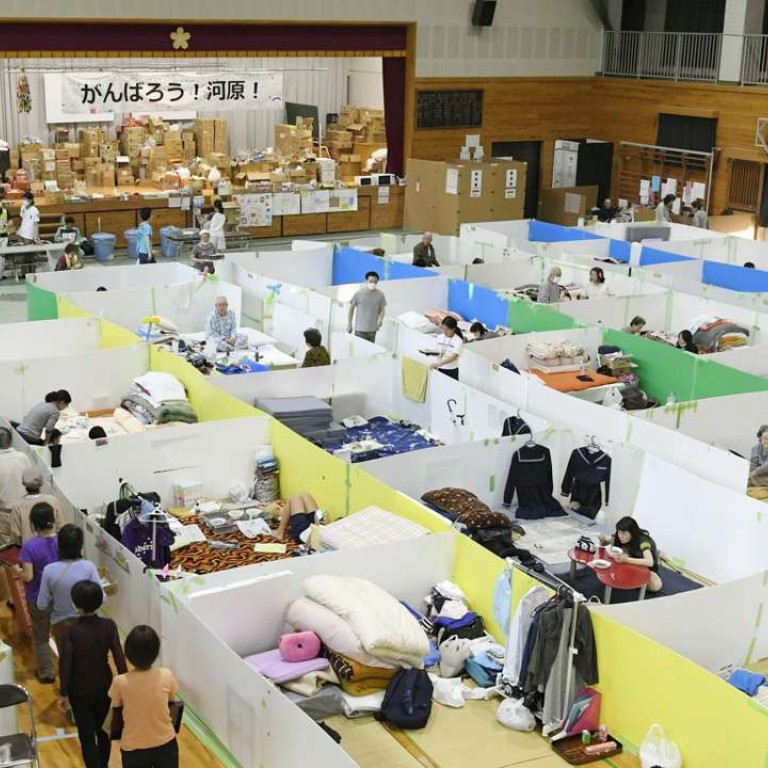
Did Japan learn its lessons from Fukushima quake and tsunami? One US expert suggests they did not
Lack of full-time, permanent, professional disaster management staff remain weaknesses.
A former US government expert on emergency management has questioned whether Japan is applying the lessons from the 2011 massive earthquake and tsunami in its northeast to its response to the recent temblors in Kumamoto Prefecture.
Leo Bosner, 69, who worked for the US Federal Emergency Management Agency for 29 years, is concerned that an integrated response may not have been in place in Japan for the quakes that jolted the south-western prefecture a month ago.
I have not really heard of any major improvements ... I am a little concerned that these problems may be continuing
“I discovered many problems” when studying “Japan’s disastrous response” to the 2011 calamity and “I have not really heard of any major improvements,” he told Kyodo News in a recent interview. “So I am a little concerned that these problems may be continuing.”
“It is too early to make a definitive evaluation of the response to the Kumamoto disaster, but recent news headlines have indicated possible problem areas,” he said, identifying such areas as questions about the use of the US military’s Osprey aircraft to language barriers for foreigners.
Bosner said the existence of no unified system for major disaster response in Japan could cause even the best-intended efforts to bog down.
“For example, various towns, prefectures and organisations may send food and other supplies to a disaster area, but if there is a shortage of people at the disaster site to sort out and distribute the supplies, the supplies don’t get distributed to those in need in a timely manner,” he said.
He also cited Japan’s lack of full-time, permanent, professional disaster management staff and of a strong connection between the governmental and non-governmental response to disasters as other big problems.
“One thing to me that is a major barrier is that in the Japan government offices, people change the job every two years...so there is no time to build up an expertise,” he said.
“I really think that if the Japanese government wants to do a strong job in disasters, they need to somehow establish a permanent staff who will stay involved over the years,” he said.
“In Japan, because everything is so spread out in the government and not working together, in my view, it is very inefficient,” he said. “I think if Japan could centralise this function more, it would be cheaper.”

Bosner also proposed transferring officials in or between the central and regional governments while always working as disaster management specialists.
“My thought was, ‘What if some worked in the Japan national government in Tokyo for two years as a disaster planner?’ But then let’s say when he rotated he would go to some other industry but would still be a disaster planner in that industry and then maybe if he rotated to a prefecture to a city, he would be a disaster planner in that prefecture or that city.”
“If they did this, in about five or 10 years, Japan would have a real network of experienced disaster planners who understood the system and could work together. But right now they don’t have this.”
Under the Bush administration, very honestly, he just appointed political friends to be in charge of Fema
He said the United States integrated all the functions to respond to disasters into Fema and turned a weak agency into one that properly works.
The administration of President Bill Clinton turned Fema around, but that of George W. Bush downsized it, which backfired later when Hurricane Katrina hit the southern part of the United States in 2005.
“Under the Bush administration, very honestly, he just appointed political friends to be in charge of Fema who did not know anything about disasters.”
“So when Katrina came, they could not give the orders, they could not make the decisions, they did not know what to do. It was terrible. For those of us who worked at Fema, it was so disappointing because we were helpless.”
Bosner said that if there is “a political will” rather than increased budgets, Japan will be able to have a better system to respond to disasters just as the United States did.
“In Japan, there are plenty of people, in my view, who would be excellent for running a Japan Fema or managing it...if the ministers of the Cabinet of the prime minister agree and say, ‘We must do this’,” he said. “But until they make that decision, nothing can happen.”
Bosner served as an emergency management expert at Fema from 1979 to 2008. He stayed in Japan from 2000 to 2001 studying that country’s emergency management system. His current job includes being an adjunct lecturer in the Emergency Medical Systems Graduate School of Tokyo’s Kokushikan University.

